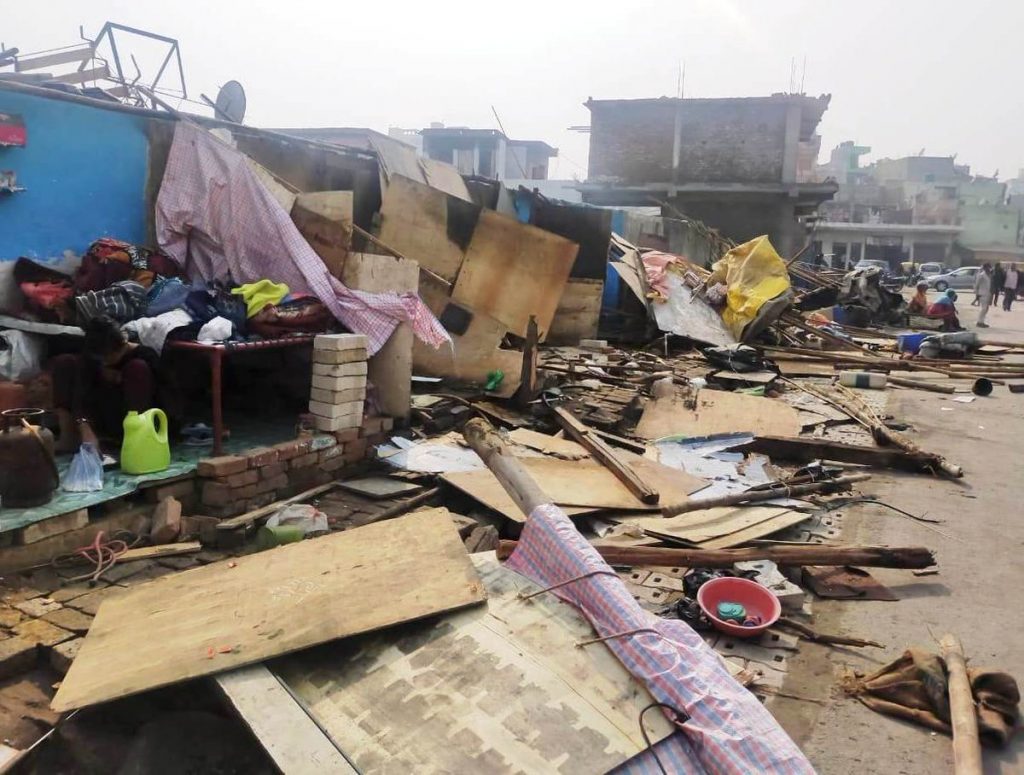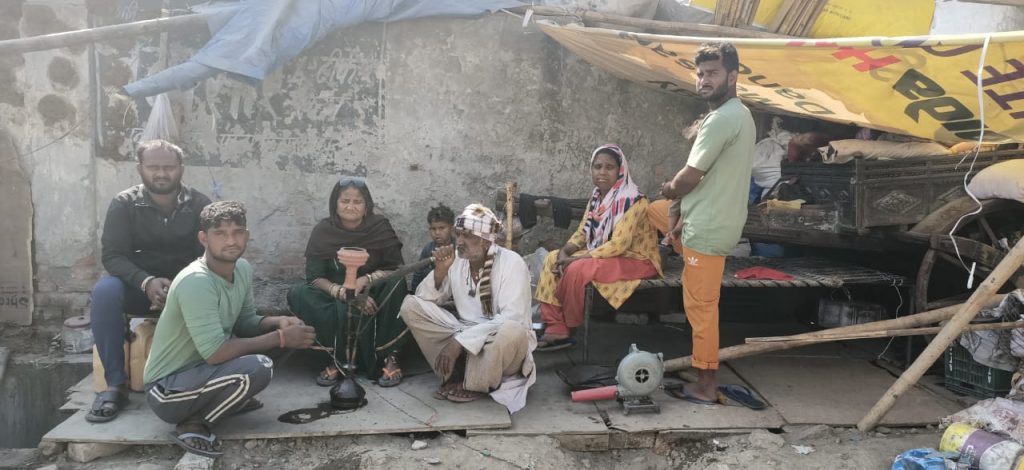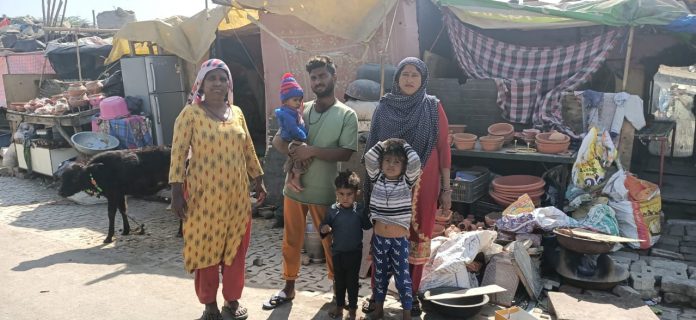The Gadia Lohar population has been widely ignored by central and state policies and has been unable to take advantage of government programs. Owing to the uncertainty of their socio-economic and official status and the resulting lack of caste certificates, the Gadia Lohars are also unable to profit from other disadvantaged community schemes.
Suchitra, TwoCircles.net
Ghaziabad: Pammi, 65, and his family sit among the ruins of his basti after a demolition drive took his home. He is a member of the Gadia Lohar nomadic community in a slum settlement of Bhovapur Basti, about a kilometre away from where the Ghazipur protest site is located. In October 2020, The Allahabad High Court stopped the Ghaziabad Development Authority (GDA) from demolishing a slum in Ghaziabad, stating that the State should have provided a location for the occupants to be rehabilitated before they were evicted and their homes were demolished, especially during a pandemic. The order came in after GDA had demolished about 225 houses.
However, the GDA went ahead and demolished the houses anyway after filing a counter-affidavit with the Court; even though the court did not direct them to move ahead with the demolitions.
About 100 households were rendered homeless by this action, amid the pandemic and bitter cold. These families belong to the Gadia Lohar community, a denotified-nomadic tribe. Gadia Lohars have been historically oppressed and marginalized in India.
In India, almost 89 per cent of denotified tribes and 98 per cent of nomadic/semi-nomadic groups are landless. 57 per cent of the population lacks access to public facilities and utilities such as clean drinking water, sanitation, and electricity, as well as access to and benefits from public services.
The Gadia Lohar population has been widely ignored by central and state policies and has been unable to take advantage of government programs. Owing to the uncertainty of their socio-economic and official status and the resulting lack of caste certificates, the Gadia Lohars are also unable to profit from other disadvantaged community schemes. Unlike many DNT-NT who are classified under the ST bracket, they can be classified as OBC, MBC, or DNT-NT depending upon the state. In Delhi, they are characterized as OBC.

Pammi’s family lives in Bhovapur, they are all married and have children. Pammi used to work as a blacksmith (Lohar). Last year his son passed away. The young children, now fatherless, were dealing with the loss of education amid a pandemic. “We constantly live in the fear of eviction. The children have fever and cold all the time—the weather is really bad. The government is very heartless,” says Pammi.
“There is a big mosquito problem here. We were told that we can build the basti when the canal next to us is covered, and we were really happy that both the water source and the housing problem will be solved at once. However, nobody ever acted on it,” says Suneel.
The slum-dwellers don’t have smartphones to provide online education to their kids. Even mobile users documented running out of cash to recharge their phones or pay for data/internet connections. Since March 2020, community children have relied solely on school-assigned homework for their education. After the basti was demolished, the kids do not have a place to sleep in. They sleep under the open sky.

The Bhovapur residents say they didn’t even receive a notice. Some residents remove the settlement when the officials come and put it back when they want to sleep.
Suneel is a driver, but his father and his 6 uncles are all Lohars.
The women, dressed in their traditional attire, are speaking in their language. The language doesn’t have a name and is endangered. “We have to go use the public bathroom every time we need to go and pay Rs 5 every time!”
Delhi Urban Shelter Improvement Board (DUSIB) has not surveyed or recognised the majority of Gadia Lohar settlements in Delhi. Only four colonies are listed in the DUSIB list of JJ settlements. The majority of Gadia Lohar communities are kutcha (temporary) structures. The unrecognized status of most Gadia Lohar settlements renders the residents ‘ineligible’ for resettlement or permanent housing under the Delhi Slum and JJ Rehabilitation and Relocation Policy, 2015, including after incidents of forced eviction.
The Housing and Land Rights Network’s report “Mapping the Marginalized focuses on rehabilitation for DNT-NT groups in India. In the report about Gadia Lohars, 55 of the 58 surveyed slums have reported forced evictions. These evictions pan out between 1991-2017, and in none of these evictions was the community consulted, informed or compensated.
“Every time we are removed from our home, I lose out on my books, my identity proofs, my school days. Why don’t people understand? Last year, in the elections, I heard “Jahan jhuggi wahin makaan,” what does that mean now?” a 15-year-old says.

The central government’s Swachh Bharat Mission has not reached most members of the Gadia Lohar community. How can families focus on constructing toilets in households, but the Gadia Lohars “do not have a permanent place to live,” Dev Pal, field researcher of Housing and Land Rights Network (HLRN), said. “The Gadia Lohar community faces a threat of eviction all over the regions of Delhi-NCR, and the slums are demolished over and over again with no promise of rehabilitation.”
The HLRN demands that the government should take cognizance of all Gadia Lohar communities, engage with them to provide them housing rights—ensure that they have access to government schemes, and for that, valid identity proofs.
“We are tired, beta. So many times we have been removed from here. We would just like a roof over our heads from the government,” says Pammi.


